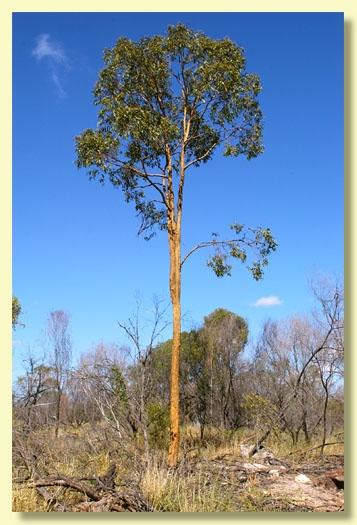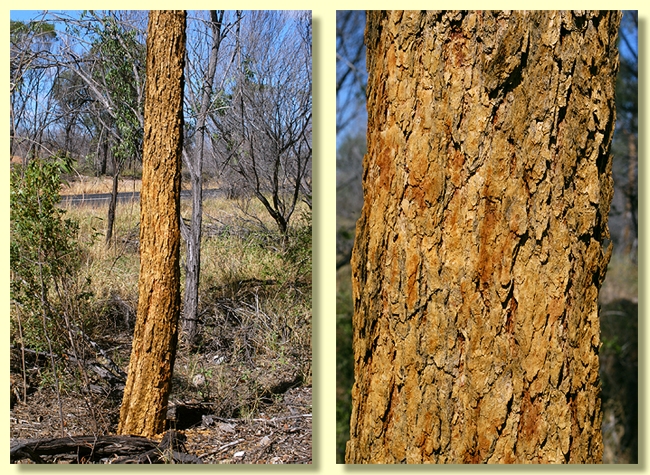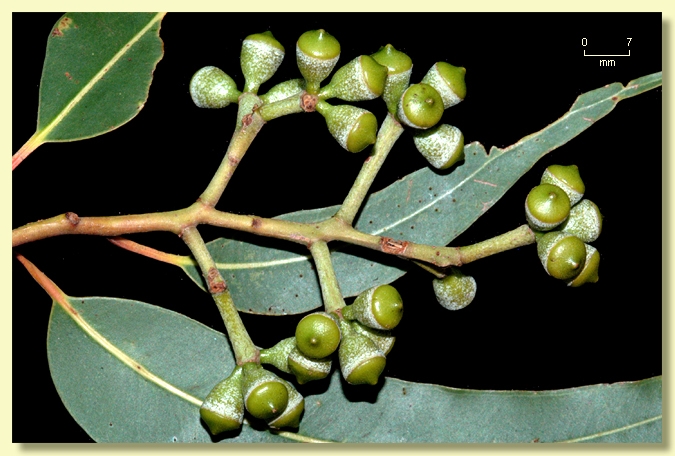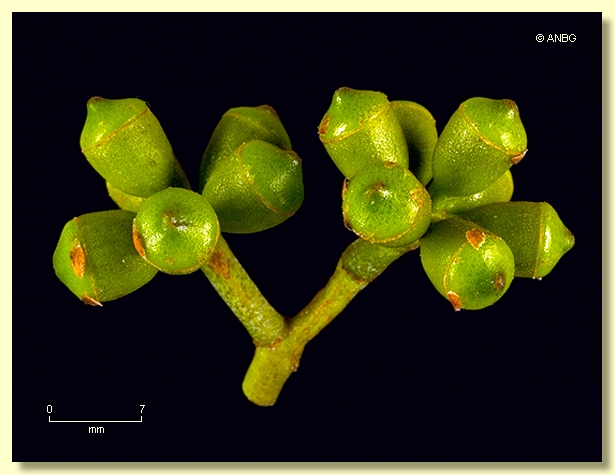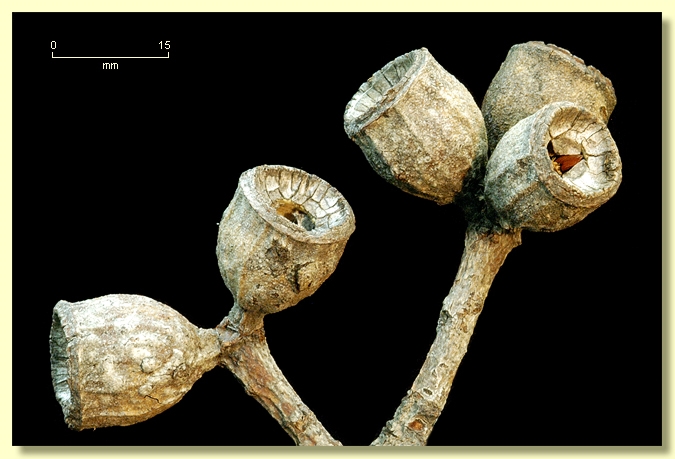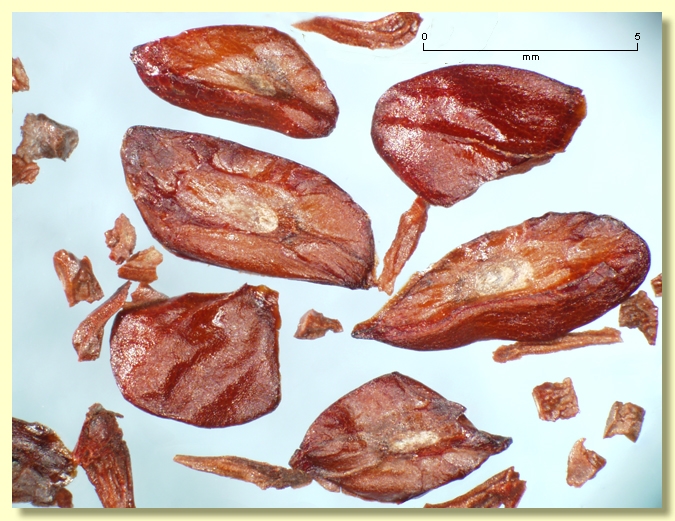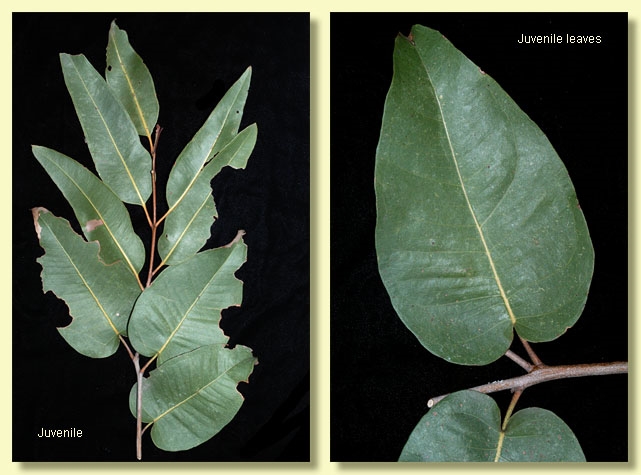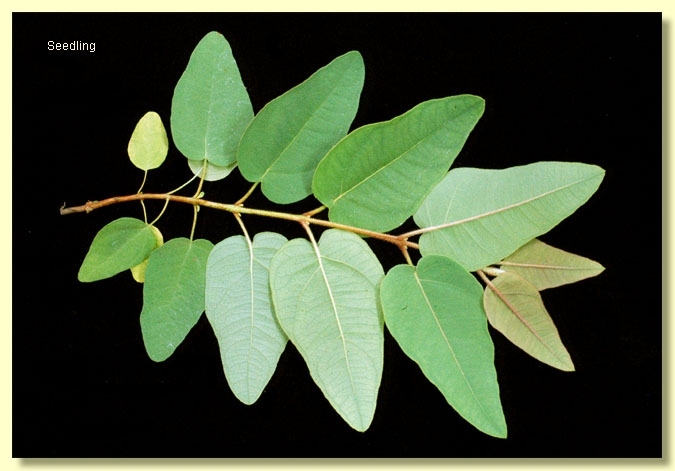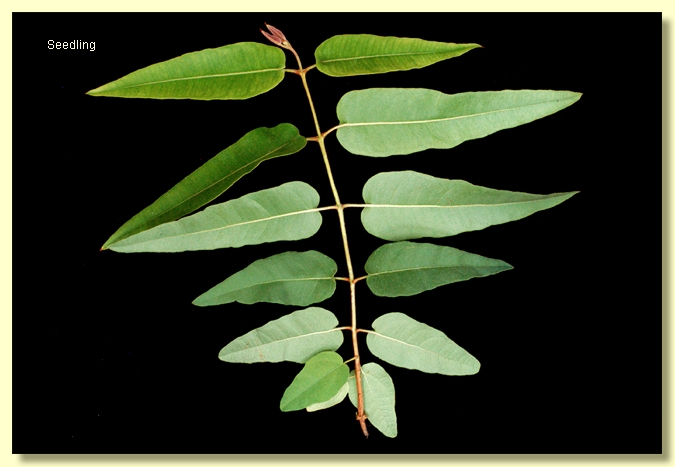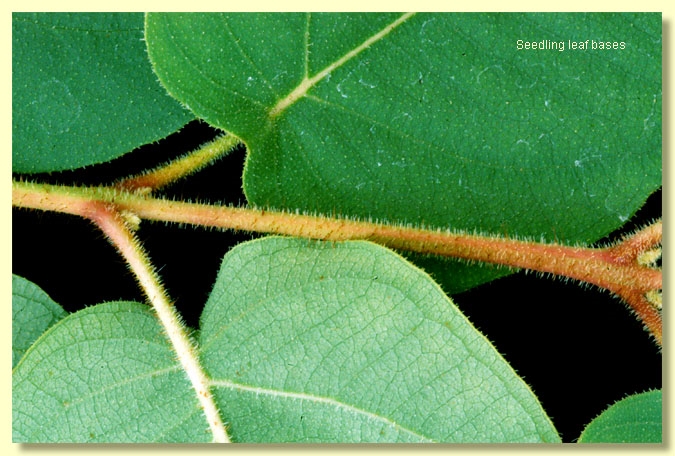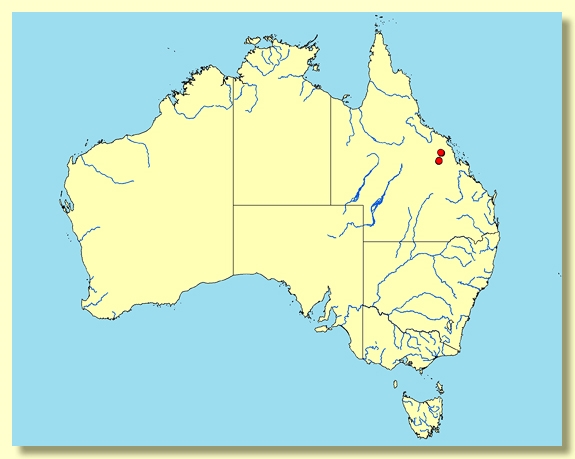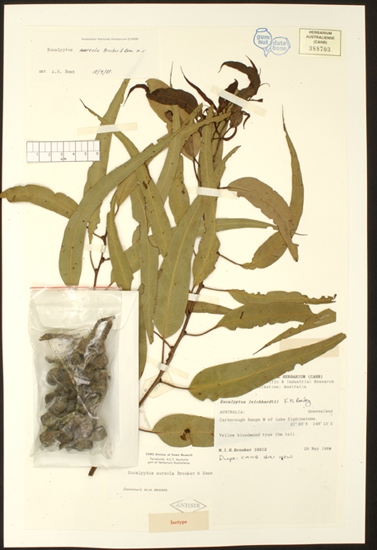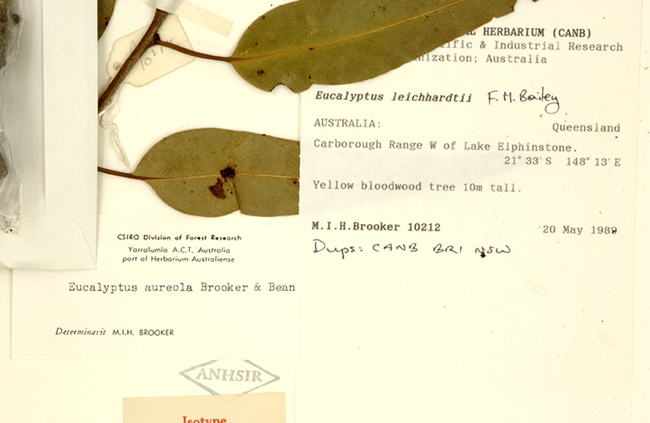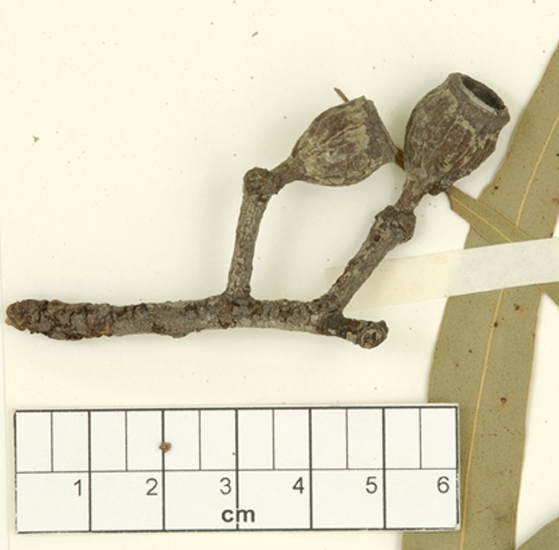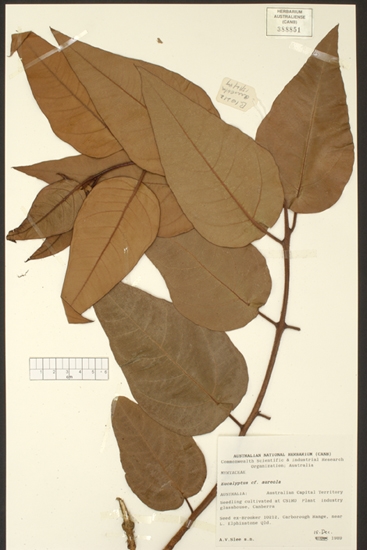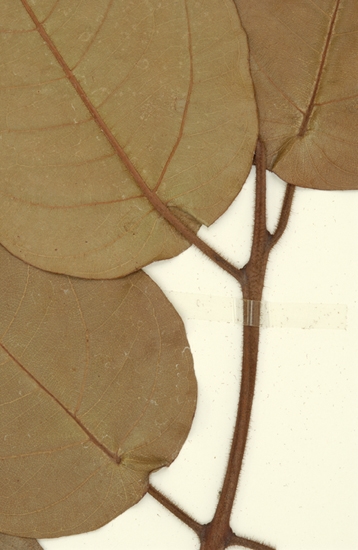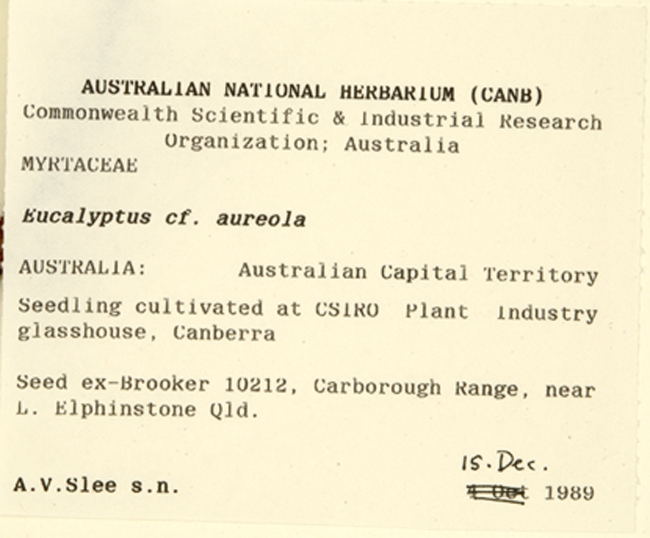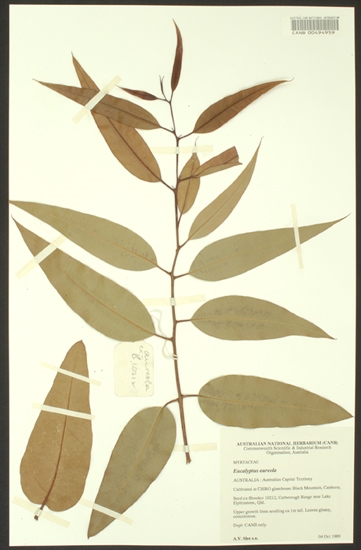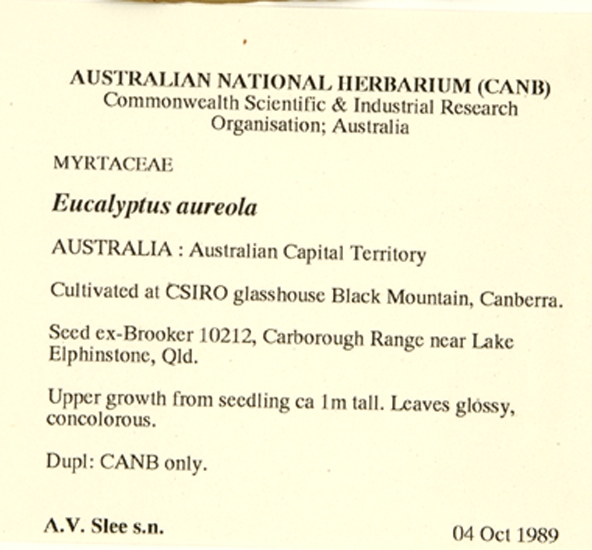Euclid - Online edition
Corymbia aureola
Corymbia | Ochraria
Corymbia aureola (Brooker & A.R.Bean) K.D.Hill & L.A.S.Johnson, Telopea 6: 374 (1995).
Tree to 15 m tall. Forming a lignotuber.
Bark rough on trunk and limbs but smallest branches smooth; rough bark thick, loosely flaky to tessellated, greyish yellow over orange-yellow.
Branchlets smooth (glabrous); have ± elongated oil ducts in the pith.
Juvenile growth (coppice or field seedlings to 50 cm): stem rounded to square in cross-section, setose; juvenile leaves opposite or becoming alternate, always petiolate, ovate-lanceolate to cordate, 11–28 cm long, 4–10 cm wide, base lobed and peltate, apex pointed, discolorous, green, ± glossy, setose only on main veins and petiole.
Crown of glabrous Adult leaves; leaves alternate, petiole 1.1–3 cm long; lanceolate or falcate, (8.5)10–20.5 cm long, 1.2–3(4) cm wide, flat, base tapering to petiole or rounded, apex finely pointed, margin entire, concolorous, glossy, green, penniveined, densely to very densely reticulate, intramarginal vein parallel to and just within margin, oil glands island, small, numerous, often more than 1 per areole.
Inflorescence terminal compound, peduncles 0.8–2.6 cm long, buds 7 per umbel, sessile or shortly pedicellate (pedicels to 0.4 cm long). Mature buds obovoid to ovoid (0.8–0.9 cm long, 0.7 cm wide), sometimes white on surface due to rubbery cuticle (not wax), scar present (outer operculum shed early), operculum flattened and prominently umbonate, or conical, stamens inflexed, anthers ± oblong, versatile, dorsifixed, dehiscing by longitudinal slits (non-confluent), style long, stigma tapered, locules 3, the ovules arranged in 5 or 7 ± vertical rows on the placentae. Flower colour unknown.
Fruit sessile or shortly pedicellate (pedicels to 0.4 cm), barrel-shaped to urceolate or cylindrical to cup-shaped, 1–1.7 cm long, 0.9–1.6 cm wide, disc descending, valves 3, enclosed.
Seeds brown to reddish brown and shiny, 4–6 mm long, boat-shaped with a keel on the smooth and usually cracked dorsal surface, not winged but some seeds have a short flange at one end, hilum ventral.
Cultivated seedlings (measured at ca node 10): cotyledons reniform to orbicular; stems rounded to square in cross-section, prominently setose; leaves always petiolate, mainly opposite but occasionally disjunct leaf pairs present, ovate to lanceolate, 9–16.5 cm long, 4–8 cm wide, base of lowest leaves rounded but upper leaves peltate, margin undulate or not, apex rounded or pointed, discolorous, green, glossy by node ca 10+, setose only on midrib and petiole.
Flowering time not known.
Rare tree endemic to Queensland, where it is found only inland from Mackay scattered on the Carborough Range and Cherwell Range, and near Blackwater on Yellowjacket Ridge. Preferred habitat is shallow sandy soil on sandstone escarpments, slopes and stony plains between hills. Corymbia aureola has rough yellow-brown loosely flaky-tessellated bark and a crown of concolorous green glossy lanceolate leaves, terminal inflorescences and juvenile leaves that are scarcely setose, glossy and have peltate leaf-bases.
C. aureola occurs just east of the distribution of the widespread C. leichhardtii. It differs from C. leichhardtii by the juvenile leaves that soon become glossy, green and are scarcely setose, glossy adult leaves and slightly larger fruit (though the dimensions do overlap). C. leichhardtii has dull scabrid juvenile leaves and predominantly dull concolorous adult leaves. C. bunites, which occurs a little further south on Blackdown Tableland and in the Expedition Range, may also have glossy adult leaves but differs in having glabrous juvenile leaves with tapering to rounded bases, not lobed or peltate, and fruit that are usually smaller (slight overlap in dimensions).
MORE ABOUT CORYMBIA
MORE ABOUT YELLOW BLOODWOODS
Corymbia aureola: Latin aureolus, golden, referring to the colour of the rough bark.

